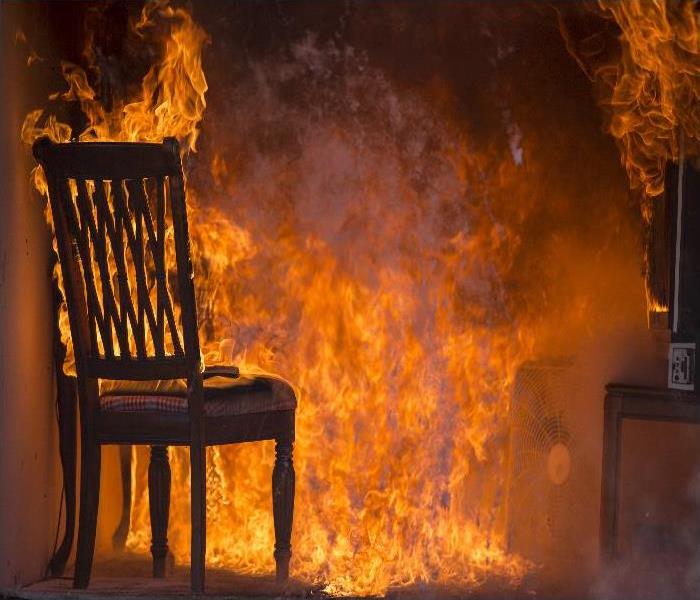What Can I Expect During Professional Fire Restoration in Lenoir City?
8/29/2020 (Permalink)
SERVPRO Prioritizes Communication with Lenoir City Homeowners During Fire Restoration -- We Partner with Our Customers for Optimal Results
The response you cannot accept from a restoration company during recovery from a household fire is silence on its evaluation results and the sharing of few details on the project plan. Transparency is critical, with the collaboration going both ways. We can only deliver our best work in Lenoir City if homeowners are forthcoming about structural details and pre-existing damage, of which we otherwise have no prior knowledge. At the same time, you deserve to know the full extent of the damage and how the various strategies we recommend promise to restore normalcy to your life and a return to your home's preloss condition.
Why Do Restoration Companies Emphasize High-Quality Cleaning Over Tear Outs and Replacement?
Professional and specially focused cleaning is the foundation of fire restoration for your Lenoir City home. Relying on the methods, products, and technologies available to the Institute of Inspection Cleaning and Restoration Certification (IICRC)-trained managers and technicians on our team can clear away all types of smoke and soot residues. Cleaning and restoration are significantly less expensive than demolition and replacement, preferred by most insurance carriers, and likely to minimize your out-of-pocket expenses. Restoration is also less disruptive and time-consuming than a rebuild for you and your family.
What Is the First Phase of Professional Fire Restoration?
When SERVPRO crews arrive, our project manager lasers in on hazard assessment and controls. We must maintain a safe household and worksite environment for occupants and our employees. Once we identify the hazards at your site, we institute controls so the fire restoration project can proceed. Our project manager is diligent in communicating both the safety hazards and proposed controls to homeowners. Risks and possible controls at a fire site include:
• Overhead and underfoot threats such as partially burned ceilings, walls, floors, and stairs, weakened and likely to fall or fail to support a load
• Controls might include installing supports and taping off the area until materials are stabilized or removed.
• Firefighting water-related hazards such as --
• Slip, trip, and fall
• Electric shock
• Trapped water that could contribute to the collapse of structures, especially if weakened by heat and charring
• Water-borne contaminants
• Controls might include IICRC-trained Water Damage Restoration Technicians (WRT) and Applied Structural Drying (ASD) experts to remove, contain, and dispose of the water safely.
• Inadequate lighting and confined spaces
• Controls might include proper training, setting up of additional lighting, and avoiding solitary task assignment.
• Contact with potentially toxic airborne and settled soots and other residues
• Controls might include containing the work area, installing air scrubbing equipment, and utilizing IICRC training to ensure cleaning products and residues are appropriately matched.
Note: During water removal and fire residue cleaning and surface restoration, we recommend and observe the following:
• Temporary evacuation of you and your loved ones until living spaces can be made safe for habitation.
• Wearing of personal protective equipment (PPE) by our workers
What Is the Typical Schedule of Fire Restoration Tasks After We Address Safety Concerns?
Water extraction and structural drying are at the top of the agenda. Until we eliminate the safety threats of water incursion, it is impossible to switch the lens to fire damage remediation. The next phases are:
• Pick up, bagging, and removal of charred and otherwise damaged debris.
• Assessment of the characteristics of the smoke and soot residues that cause corrosion while coating surfaces.
• Testing of proposed cleaning products and methods on the various surfaces affected.
• Adaptations of the cleaning regimens if surfaces show unacceptable damage from the initial cleaning match.
• Discussions with your insurance company, looping you into the communications, if some structural components or contents appear too damaged for restoration -- needing replacement instead.
• Implementation of approved and effective cleaning protocols to remove the soot residues.
• Arranging for repairs and rebuilding when cleaning was determined inappropriate.
• Choosing deodorization strategies if odors persist even after debris removal and thorough cleaning.
• Consideration of HVAC system cleaning or sealing if smoke and soot infiltrated and threatens to continue spreading residues and odors
Your confidence in the skilled team from SERVPRO of Loudon & Roane Counties will only grow as we move from assessment by completing the tasks required to make it “Like it never even happened.” Training, experience, equipment, and integrity set us apart. Call (865) 986-3015 to get your fire restoration project going.




 24/7 Emergency Service
24/7 Emergency Service
